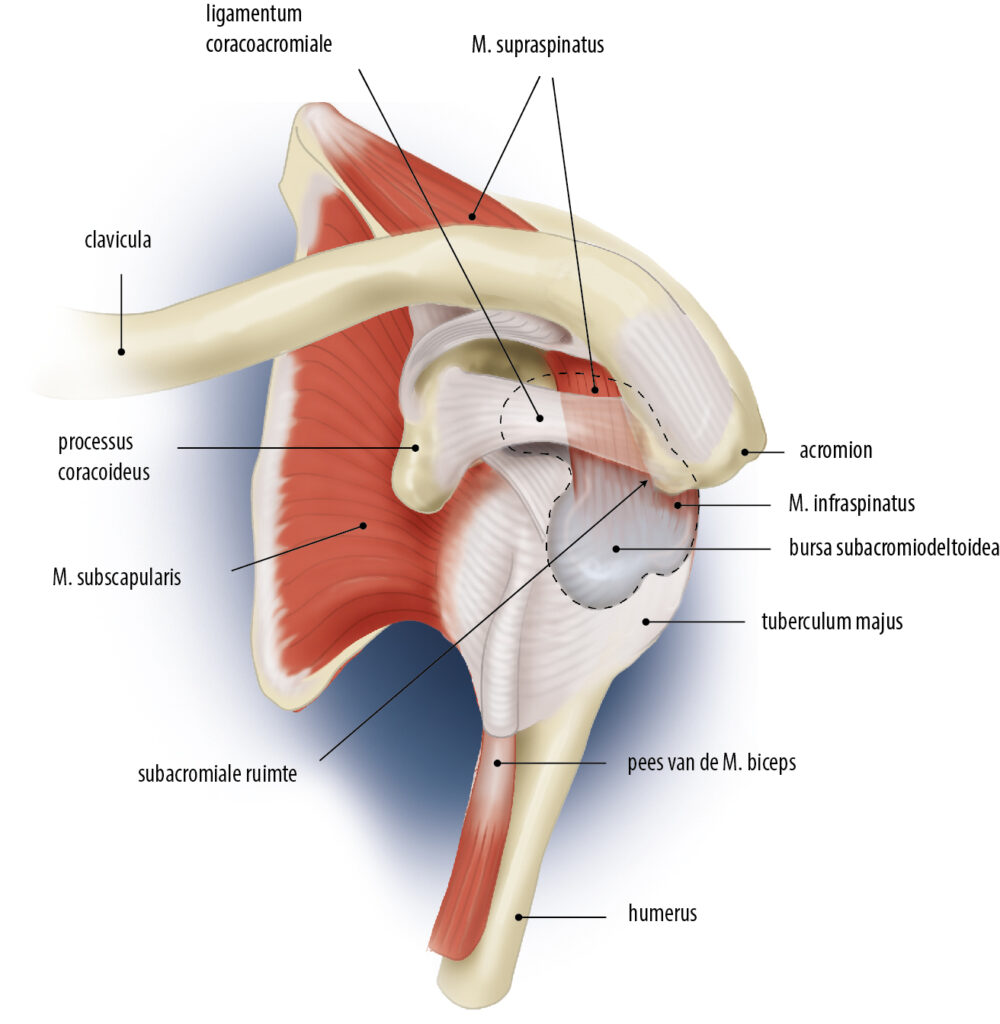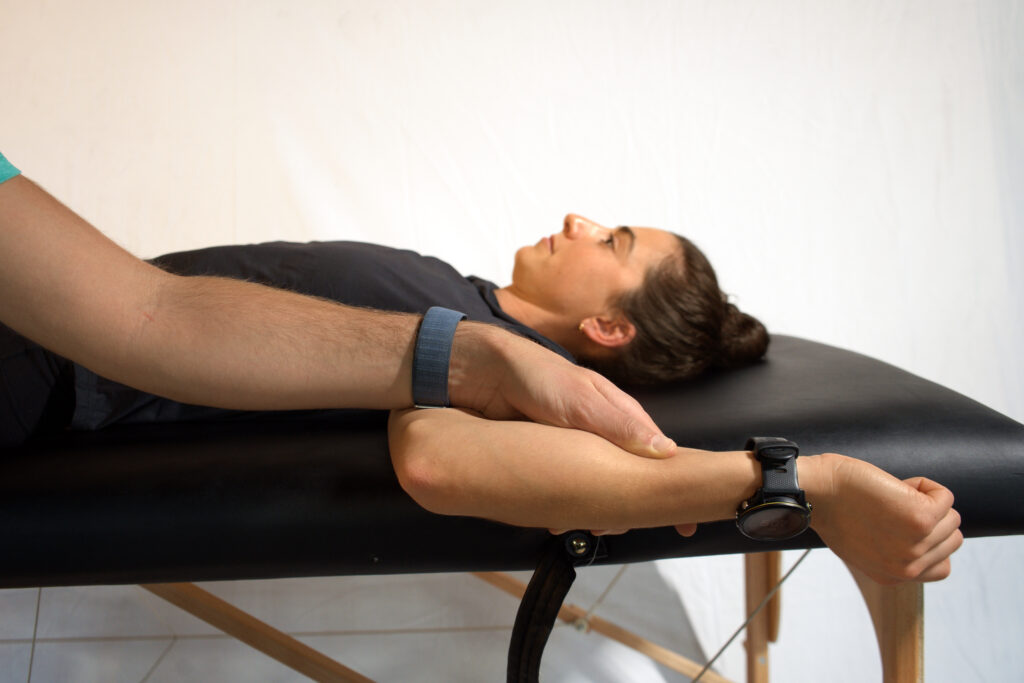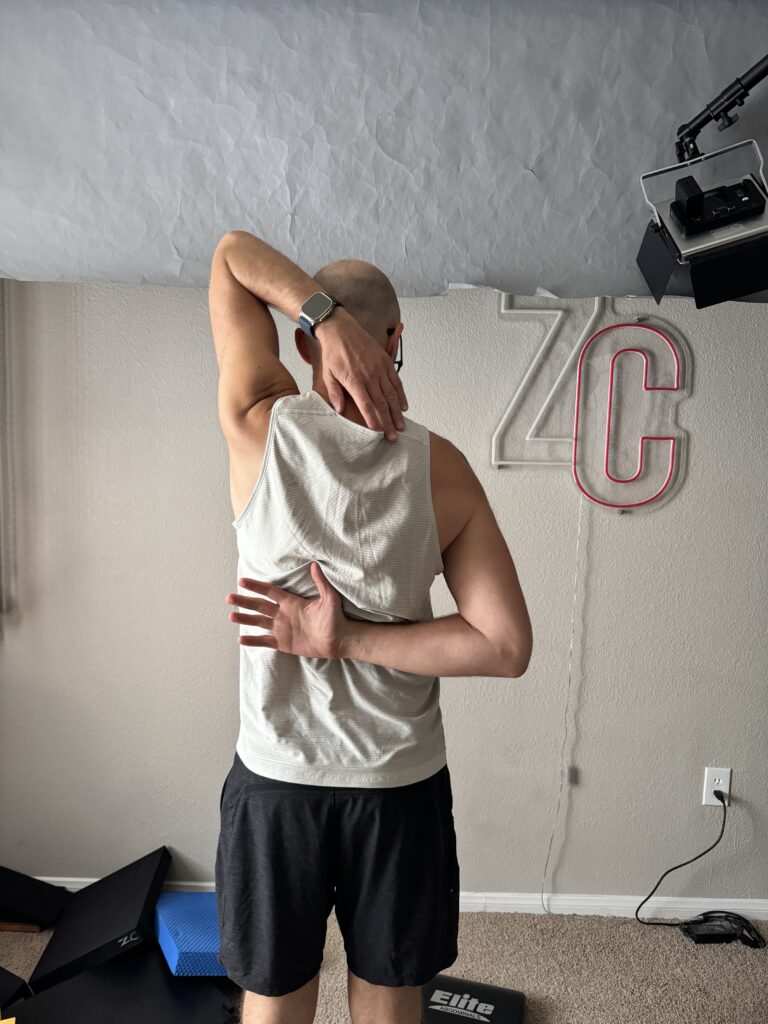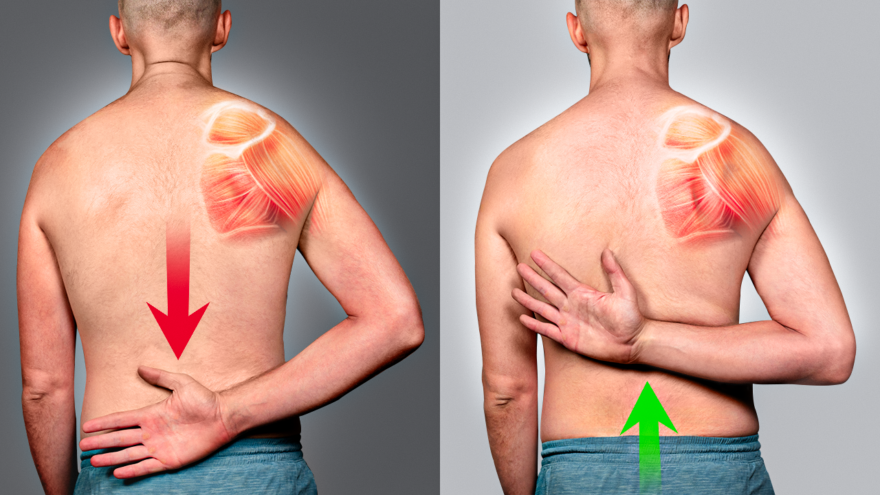Table of Contents
The Truth About Shoulder Pain and Rotator Cuff Exercises
Do you have shoulder pain, impingement, or tightness? You might think that your rotator cuff is weak and needs strengthening with specific exercises. But, I’m here to tell you that’s not entirely true.
I’ll explain why those exercises often don’t work and show you a sequence of movements to address shoulder issues quickly.
Understanding Shoulder Mobility

Your rotator cuff muscles help stabilize the shoulder and produce arm rotation. But if you lack mobility, strength exercises won’t be effective.
Think of your shoulder as a cup. The bigger the cup (mobility), the more water (strength) you can hold. Limited mobility means limited strength potential. Therefore, improving mobility should come first.
Testing Your Shoulder Mobility
External Rotation Test
Tests how well your shoulder can rotate externally. If you lack this movement, you can’t expand the upper back region, which is critical for this motion.

- Lie on your back with your arm at a 90-degree angle at the shoulder and elbow.
- Let your hand fall backward without forcing it. Aim for about 90 degrees or your wrist slightly cocked back touching the ground.
Internal Rotation Test (Apley Scratch Test)
Evaluates your ability to internally rotate the shoulder. This helps spot restrictions in the front chest and back lower rib cage.

- Top arm tries to touch the opposite shoulder blade tip.
- Bottom arm touches the bottom point of the opposite shoulder blade.
Exercises for Improving Mobility
If you are limited in both measures, the first thing you’ll want to address is shoulder external rotation.
External Rotation Exercises
Seated Upper Back Expansion
Improves external rotation by opening up your upper back. This allows you to better use your rotator cuff muscles without compensatory movements.
- Sit with elbows on a table, a light mini band around your wrists, eyes straight ahead.
- Inhale for 5-10 seconds through the nose, exhale for 4-8 seconds through the mouth while spinning your hands outward.
Side-Lying Rotation
Enhances external rotation by using weight to guide the movement. This exercise also improves trunk and hip rotation. Get these to turn, and shoulder function will be ON POINT.
- Lie on your side, bottom leg straight, top hip bent. Hold a weight in your top hand.
- Inhale and roll onto your back, swinging the top leg across. Exhale and press the weight to the ceiling, returning to the starting position.
Below is the rolling progression:
Internal Rotation Exercises
Once you’ve gotten external rotation, now is the time to improve your shoulder internal rotation.
Hooklying Armbar
Promotes internal rotation and strengthens the shoulder muscles.
- Lie on your back, weight in hand, knuckles pointing up. Ensure the lower back is flat on the ground.
- Inhale for 5-10 seconds through the nose, exhale for 4-8 seconds through the mouth, reaching your arm toward the ceiling.
Quadruped
Targets internal rotation through weight-bearing movements. This exercise increases shoulder stability and mobility.
- On hands and knees, hands flat, focus on two points: the pisiform bone and the base of the index finger.
- Inhale for 5-10 seconds, exhale for 4-8 seconds while pressing your hands and kneecaps into the ground, lifting your trunk.
Combined Rotation
Mid Lever Side Plank
Combines external and internal rotation for comprehensive shoulder improvement. This exercise also engages the entire body for enhanced shoulder function.
- Lie on your side, bottom hip less than 90 degrees, top leg forward. Place the bottom forearm on the ground.
- Inhale for 5-10 seconds, exhale for 4-8 seconds while rotating your trunk and pressing your support points.
These exercises target both external and internal rotation, ensuring your shoulder moves and feels better. Improving shoulder mobility is crucial before working on strengthening exercises. For those struggling with overhead arm movements, additional strategies are available to enhance shoulder mobility further.
By following these steps and focusing on mobility first, you’ll see significant improvements in your shoulder function and overall comfort.

